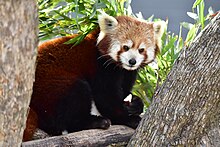
The San Diego Zoo Safari Park is a zoo in the San Pasqual Valley area of San Diego, California, near Escondido. The park houses more than 3,000 animals representing over 300 species. It also includes a botanical garden with more than one million plants representing over 3,700 species. The park houses a large array of wild and endangered animals from every continent, except Antarctica. Located in a semi-arid climate, the area is noted for its year-round feeling of an African environment.
The Saint Louis Zoo, officially known as the Saint Louis Zoological Park, is a zoo in Forest Park, St. Louis, Missouri. It is recognized as a leading zoo in animal management, research, conservation, and education. The zoo is accredited by the Association of Zoos and Aquariums (AZA). Admission is free based on a public subsidy from a cultural tax district, the Metropolitan Zoological Park and Museum District (ZMD); fees are charged for some special attractions. A special feature is the 2 ft narrow-gauge Emerson Zooline Railroad with passenger trains pulled by Chance Rides C.P. Huntington locomotives that encircle the zoo, stopping at the more popular attractions.

The Houston Zoo is a 55-acre (22 ha) zoological park located within Hermann Park in Houston, Texas, United States. The zoo houses over 6,000 animals from more than 900 species. It receives around 2 million visitors each year and is the second most visited zoo in the United States, surpassed only by the San Diego Zoo. It is accredited by the Association of Zoos and Aquariums (AZA).
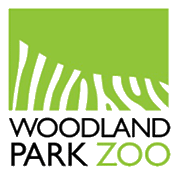
Woodland Park Zoo is a wildlife conservation organization and zoological garden located in the Phinney Ridge neighborhood of Seattle, Washington, United States. The zoo is the recipient of over 65 awards across multiple categories. The zoo has around 900 animals from 250 species and the zoo has over 1 million visitors a year.

The Oakland Zoo is a zoo located in the Grass Valley neighborhood of Oakland, California, United States. Established on June 6, 1922, it is managed by the Conservation Society of California, a 501(c)(3) non-profit organization dedicated to the conservation of wildlife both locally and globally. The zoo is home to more than 850 native and exotic animals and is a member of the Association of Zoos and Aquariums (AZA).

The Detroit Zoo is a zoo located in the cities of Huntington Woods and Royal Oak in the U.S. state of Michigan. Spanning 125 acres (50.6 ha), it houses more than 2,000 animals and more than 200 different species. The zoo was the first U.S. zoo to feature bar-less habitats, and is regarded to be an international leader in animal welfare, conservation and sustainability by the Detroit Zoological Society.
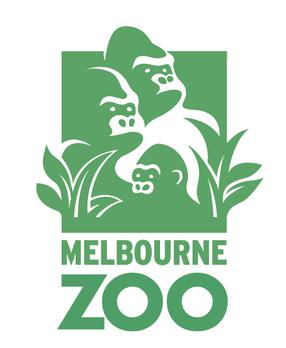
Melbourne Zoo is a zoo in Melbourne, Australia. It is located within Royal Park in Parkville, approximately 4 kilometres (2.5 mi) north of the centre of Melbourne. It is the primary zoo serving Melbourne. As of 2021, the zoo contains 3742 animals comprising 243 species, from Australia and around the world. The zoo is accessible via Royal Park station on the Upfield railway line, and is also accessible via tram routes 58 and 19, as well as by bicycle on the Capital City Trail. Bicycles are not allowed inside the zoo itself.

The Riverbanks Zoo and Garden is a 170-acre (69 ha) zoo, aquarium, and botanical garden located along the Saluda River in Columbia, South Carolina, United States. A small portion of the zoo extends into the nearby city of West Columbia. It is operated by the Rich-Lex Riverbanks Park Special Purpose District, a partnership of the city of Columbia and Richland and Lexington counties. It is overseen by the Riverbanks Park Commission, comprising two members each from the three governments and one at-large member.

The Maryland Zoo — also known as The Maryland Zoo in Baltimore and formerly known as The Baltimore City Zoo or the Baltimore Zoo — is a 135-acre park located in historic Druid Hill Park in the northwestern area of the City of Baltimore, Maryland, with the postal address of 1876 Mansion House Drive. Druid Hill was opened in 1876 as the first major park purchase by the City under foreseeing Mayor Thomas Swann (1809-1883), and was later designed by famed nationally-known landscaper Frederick Law Olmsted (1822-1903).

The Abilene Zoo is a 16-acre (6.5 ha) zoo located in Abilene, Texas. The zoo has over 800 animals representing over 175 species. Attendance for 2021 was 255,000.
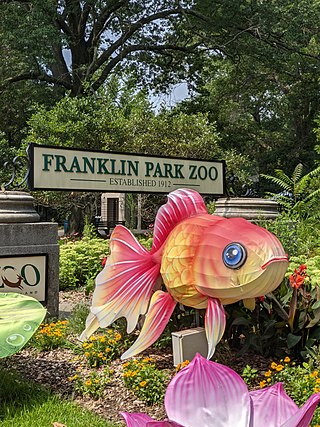
The Franklin Park Zoo is a 72-acre (290,000 m2) zoo located in Boston, Massachusetts and is currently operated by Zoo New England, which also operates the Stone Zoo in Stoneham, Massachusetts. The zoo is located in the northeast portion of Franklin Park, Boston's largest park and the last component of the city's famed Emerald Necklace.
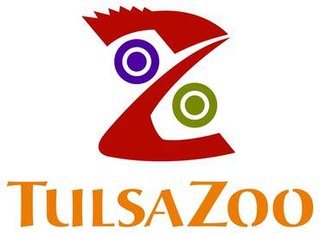
The Tulsa Zoo is an 84-acre (34 ha) zoo located in Tulsa, Oklahoma, United States. The Tulsa Zoo is owned by the City of Tulsa, but since 2010, has been privately managed by Tulsa Zoo Management, Inc. The zoo is located in Mohawk Park, one of the largest municipal parks in the United States. The zoo is run as a non-profit.
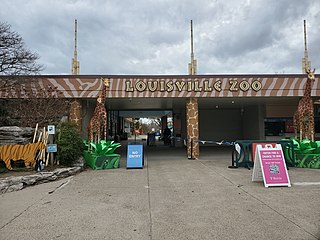
The Louisville Zoological Gardens, commonly known as the Louisville Zoo, is a 134-acre (54 ha) zoo in Louisville, Kentucky, situated in the city's Poplar Level neighborhood. Founded in 1969, the "State Zoo of Kentucky" currently exhibits over 1,200 animals in naturalistic and mixed animal settings representing both geographical areas and biomes or habitats.

The Birmingham Zoo is a zoological park that opened in 1955 in Birmingham, Alabama, United States.

Tarangire National Park is a national park in Tanzania's Manyara Region. The name of the park originates from the Tarangire River that crosses the park. The Tarangire River is the primary source of fresh water for wild animals in the Tarangire Ecosystem during the annual dry season. The Tarangire Ecosystem is defined by the long-distance migration of wildebeest and zebras. During the dry season thousands of animals concentrate in Tarangire National Park from the surrounding wet-season dispersal and calving areas.
The Roger Williams Park Zoo of Providence, Rhode Island, contains more than 800 animals in natural settings from a total of 160 species from around the world. In 1986, the zoo became the first zoo in New England to earn accreditation from the Association of Zoos and Aquariums. Founded in 1872, the zoo is the third oldest zoo in the nation. The zoo and the nearby Carousel Village are some of the main attractions of Roger Williams Park.

The Potawatomi Zoo is a 23-acre (9.3 ha) zoological park located in South Bend, Indiana, United States. The zoo is nestled in Potawatomi Park between the St. Joseph River and the Grand Trunk railroad in the east side neighborhood of River Park. Founded in 1921, it is Indiana's oldest zoo. It features over 400 animals and is accredited by the Association of Zoos and Aquariums. The zoo has over 200,000 visitors each year.

The Kansas City Zoo & Aquarium is a 202-acre (82 ha) zoo founded in 1909 and is located in Swope Park at 6800 Zoo Drive, Kansas City, Missouri, in the United States. The zoo has a Friends of the Zoo program to help promote the work of the zoo which sees over one million visitors a year. The zoo is home to nearly 1,700 animals and the aquarium has around 8,000 animals. The zoo is an accredited member of the Association of Zoos and Aquariums (AZA).

Como Zoo was the first zoo established in Minnesota. Founded in 1897, when the then mayor of Saint Paul wanted a place for his deer to live. The zoo is located within Como Park, in Saint Paul, Minnesota. Como Zoo is a member of the Association of Zoos and Aquariums (AZA).

The Virginia Zoological Park, commonly known as the Virginia Zoo, is a 53-acre (21 ha) zoo located adjacent to Lafayette Park in Norfolk, Virginia, United States. The zoo opened in 1900, and was accredited by the Association of Zoos and Aquariums (AZA) in 1987.




